Need to know the correct placement for a TENS unit pad for ulnar nerve pain? Well, then keep reading to find how to correctly use a TENS to help treat this type of pain.
The ulnar nerve originates in the spinal region of the neck, but its main line runs from the shoulder, down the arm, through the wrist, all the way to the pinky and ring finger. It is one of three major nerves in the arm. When the ulnar nerve is pinched or otherwise injured, you can start to feel pain in all of these areas listed above.
The root of the pain is what’s called “ulnar nerve entrapment,” which is basically when inflammation from an injury constricts muscles around the ulnar nerve.
TENS Pad Placement For Ulnar Nerve Pain
Finding the right strength and placement can require some adjusting, but here is a placement that has helped me treat ulnar nerve pain.
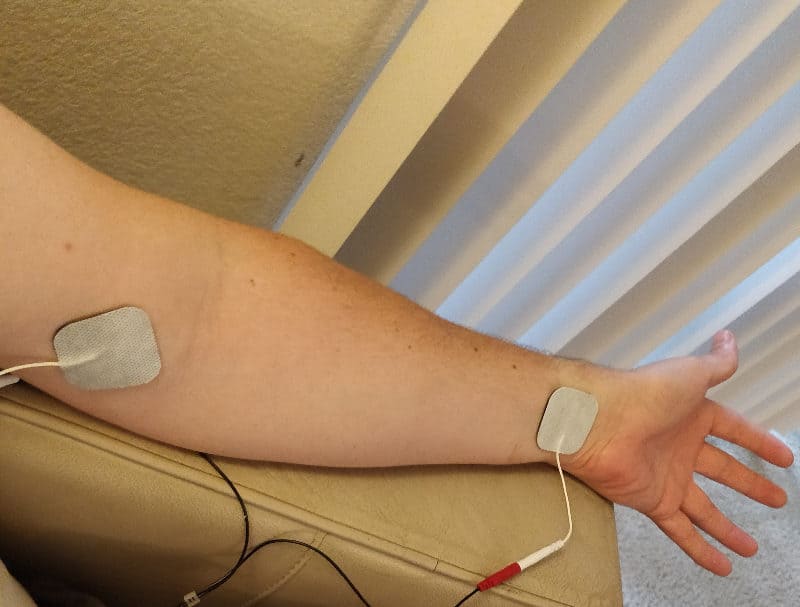
For ulnar nerve pain, you will typically place one pad above the elbow, and the other on the wrist of your inside arm as pictured. If you own a unit with four pads, the second set can be placed in the same regions on the other side of the arm. This placement will cover the entire area affected by constriction. Placing directly on the joint is not recommended, as the pads won’t stick well there.
To target more localized pain, you have the option to cover a smaller area between the pads. For example, for hand pain, you cold place an electrode on both sides of the palm. For the first 24 hours, the standard recommendation is using the unit as needed for immediate relief, then reducing to three 30 minute sessions per day after that.
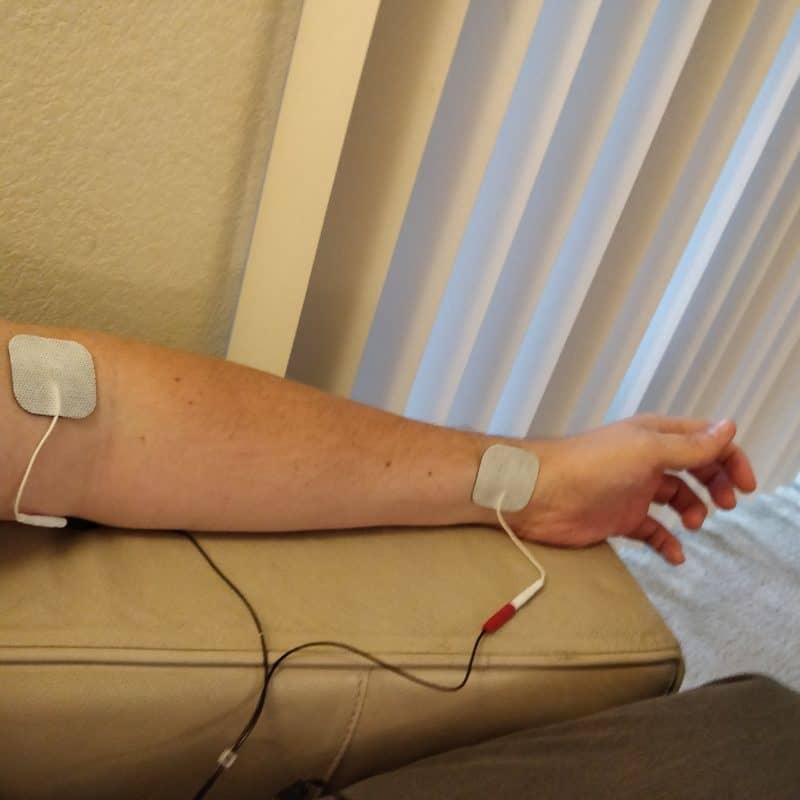
Another placement option is to put one pad on the top side of your wrist while another pad is placed on the top portion of your arm where the elbow meets.
The strength of the electrical power is adjustable, though customization varies depending on the specific model. Typically, less expensive units offer less customization, and the settings may be pre-programmed, while more expensive units allow you to choose a specific power output.
In many cases, a simpler model could be perfectly fine , and other premium features, like a touch screen or program memory, are nice, but not necessary.
How High Should I Set My TENS Unit? click here to read what settings to use.
Need to upgrade your TENS unit?
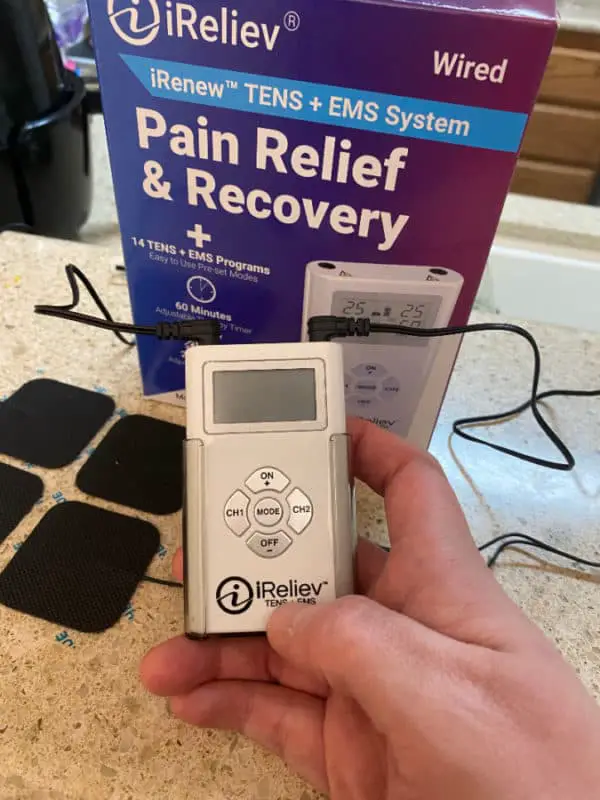
This is the exact TENS unit that I use. It is perfect for alleviating many common types of pain. The iReliev is a great little device and has a lot going for it.
It is well under $80 and has several programs to choose from and is small enough to fit in your pocket.
You do not need to spend hundreds of dollars to get a quality TENS unit and iReliev gives you a ton of value for the price being paid. Best part is they are based in Dallas, Texas and have phenomenal customer service FREE shipping and delivery in less than 5 days.
Get yours today on the iReliev website by clicking here.

Why should you trust me?
I have extensively used TENS units for neck, shoulder, back and knee issues. I became familiar with TENS therapy through countless visits to my chiropractor and physical therapist’s office. I have spent many hours researching and reading how TENS therapy can alleviate pain.
I consider myself knowledgeable in the use of TENS units and have used them regularly to help manage pain over the years. Many of my recommendations are from firsthand experience/use and hopefully my information can be a benefit to you.
Want to know where else a TENS unit can be placed? Check out my TENS placement guide for how to use one for-
Knee Pain
Neck Pain
Shoulder Pain
Tension Headaches
Golfer’s Elbow
Plantar Fasciitis
Rotator Cuff Pain
Restless Leg Syndrome
Helpful Tips for Using a TENS Unit
Once you attach the TENS unit and turn it on, it can work immediately .
There are no serious side effects, some users may experience mild skin irritation. This can usually be fixed by first cleaning the skin before placing the pad.
It could also help to rotate, using a few different spots instead of always the same ones. You should avoid placing a pad on an already irritated area, and never on an open wound.
The only other issue that might occur is pain or muscle twitching, but if this happens, that means that either the power is too high or you are using the machine too often.
If you simply decrease the settings or take a break, these problems will stop. You may not be a good candidate to use a TENs unit if you have a pacemaker or other heart conditions, epilepsy, or are in the early stages of pregnancy.
Causes of Ulnar Nerve Pain
Most of the time, this problem starts in the elbow, with a specific kind of ulnar entrapment called “cubital tunnel syndrome”.
But these names are all just technical: basically, the ulnar nerve needs space to move. Your elbow is vulnerable and sensitive, and an injury pinches the nerve and causes pain. If you’ve ever hit your funny bone, then you’ve experienced a very temporary, but unpleasant form of ulnar entrapment.
You feel the uncomfortable combination of pain and tingling all over your arm, as the ulnar nerve feeds into the skin as well.
Ulnar entrapment is the second most common nerve problem in the arm after carpal tunnel syndrome. Some of its most common causes within the elbow result from simply leaning on the elbow too long, bending it too much, or putting it through repetitive work tasks, impact sports, or improper exercise.
You can also be susceptible if you drive or operate machinery that vibrates. Strain can result in muscle inflammation, fluid buildup, or swelling that constricts the nerve and causes pain, numbness, and/or impaired movement. Likewise, arthritis and obesity are risk factors for similar reasons, as well as age for its basic wear and tear.
Other signs and symptoms besides pain include difficulty gripping or performing other tasks with the hand, as well as sensitivity to cold temperatures.
You may also hear a pop when you bend the arm. Often a person will notice that the pain is much worse when they do activities that require more elbow bending or hand movement, such as tennis, golf, baseball, playing an instrument, or typing.
Proper diagnosis by a trusted physician is crucial.
Cubital tunnel syndrome is often misdiagnosed as carpal tunnel syndrome, resulting in improper treatments and a prolonging of the problems.
Aside from a physical examination and localizing the center of the pain by applying pressure, X-rays and/or ultrasonography and magnetic resonance neurography may be necessary to get a look inside.
Ulnar nerve injuries happen all the time.
Sometimes, it may go away on its own, but if the problems persist for several weeks, treatment is very important: ulnar entrapment could wear away or stiffen the muscles in severe cases, sometimes even causing the hand to atrophy into a claw .
Besides your basic icing, rest, or an arm brace, the first line of treatment for ulnar entrapment is typically an anti-inflammatory or anti-convulsant drug, or possibly steroid injections.
Some clinical trials indicate that only half of patients may get some relief from anticonvulsants . And if they do help, the benefits tend to dwindle after several weeks.
The most common nerve-targeting drug prescribed, gabapentin, is actually an anti-seizure medication. And it does not come without potential side effects, including dizziness, drowsiness, and possible coordination or memory impairment, not to mention changes in mood.
In cases where particularly high doses of gabapentin were necessary, over 25% of patients in one study were forced to stop taking the drug because of these side effects.
As for steroids, they’ve been found to have little effect compared to a placebo, and the FDA has recently stated that they may cause rare, but serious complications as well.
Tricyclic antidepressants too are often prescribed for nerve pain, and though studies indicate they can be helpful, many patients must also stop these because of the side effects.
In severe cases, ulnar entrapment issues may require surgery, but a doctor will usually explore other options first unless serious trauma has occurred or the muscles have already started to wear down.
You should always get a proper diagnosis from a physician, because of the potential long term risks, which can worsen if untreated and increase the possibility that surgery will be necessary. Otherwise, once you see your doctor and get his opinion, chances are less invasive options would be the first to consider.
This is the main advantage of the TENS unit for treating the pain from ulnar entrapment compared to some alternatives: it is non invasive and has no serious side effects.
And if it eases the pain while healing takes its course, you would have to go no further.
It is a small, battery-operated device, about the size of a cell phone, with a cable leading to electric pads to stick to the body.
TENS units are prescribed for many types of pain.
The FDA has recently approved it as a preventative treatment for migraines, and as an over the counter device for general pain management . Many insurances cover a TENS unit, but it can also be purchased in a pharmacy or online out of pocket, starting at about $50.
So how does it work?
You stick the pads to specific points on the body, and the device sends electrical pulses through them to the nerves. You will feel a slight tingling, but nothing painful. The pulses stimulate your nerves with two major effects that ease pain:
first, the TENS unit prevents certain receptors from signaling your brain that you are even experiencing pain. Secondly, it promotes the release of endorphins, which provide an overall pleasant feeling, as well as resilience to pain.
Exercises for Ulnar Nerve Pain
In many cases, physical activity may have caused the ulnar entrapment, but the right kinds of movement can help heal it. And exercise and the TENS unit have complementary benefits. The exercises that can heal ulnar pinching are known as “nerve gliding,” stretches that involve slow, controlled movements.
Doing these exercises basically helps your nerves wiggle around, and it opens up the space around them as you move your joints .
One simple exercise involves stretching the arm out straight, palm up. You then bend your fingers and flex to bring your hand towards the shoulder, and then finally rotate the wrist to face the hand in the opposite direction.
For a similar nerve glide, you can stand up straight with your arms at your side. You then slowly raise one hand to your forehead, and pause with your palm touching there, before slowly lowering the arm back down.
While most exercises involve the elbow and wrists, some target your neck too, as that’s where the ulnar nerve originates. Several useful exercises can be found online, but it’s definitely a good idea to consult your doctor or physical therapist first.
And the most important rule is always this: if anything causes pain, stop immediately and consult your doctor to adjust the plan.
Exercise and the TENS unit have a common effect of unknotting the muscles surrounding your nerves and reducing the inflammation that causes compression.
The TENS unit also improves overall circulation. So though by itself the TENS unit can ease pain, it is also a great help in extending the benefits of stretches .
And even if you and your doctor do decide to use medication or another treatment, it may still be beneficial to use TENS as well, for its immediate soothing effects.
Check out this video from Dr. Levi Harrison as he discusses what the ulnar nerve is and how to treat it
Since the TENS unit is so portable, you can feel free to use it at the office as well.
Obviously, if your job is causing the ulnar problems, stopping some of these activities could be necessary to recover. But if you are experiencing mildly worse pain at work, TENS can help you get through the day.
It’s a good idea to get everything set up with a doctor first.
Once you have a plan set up for any chronic issues of ulnar entrapment, you can take the TENS unit out and use it whenever things flare up in the future.
This can help ease the pain while you wait and see if the inflammation goes down after several days or a few weeks.
Obviously, any serious trauma or will require appropriate care from a professional.
For garden-variety cases, however, it can pay to explore the noninvasive option first. If TENS eases your pain while you wait for inflammation to heal, then you’ve saved the trouble of dealing with medication. Less medication = fewer side effects.
Since it is convenient to use, affordable, and effective for many people, TENS is an option worth considering first.
Thank you for reading,
References
LINK 1: http://teachmeanatomy.info/upper-limb/nerves/the-ulnar-nerve/
LINK 3: http://parkviewortho.com/elbow-treatments/ulnar-nerve-entrapment-and-treatment/
LINK 4: https://www.medicalnewstoday.com/articles/318043.php
LINK 5: https://www.ncbi.nlm.nih.gov/pmc/articles/PMC2599973/
LINK 6: https://www.physio-pedia.com/Cubital_Tunnel_Syndrome
LINK 7: https://www.healthline.com/health/ulnar-nerve-dysfunction#treatment
LINK 8: https://www.cochrane.org/CD007938/SYMPT_gabapentin-chronic-neuropathic-pain-adults
LINK 9: https://www.rxlist.com/neurontin-side-effects-drug-center.htm#overview
LINK 10: https://www.ncbi.nlm.nih.gov/pmc/articles/PMC4673958/
LINK 11: https://www.ncbi.nlm.nih.gov/pubmed/27845501
LINK 12: https://jamanetwork.com/journals/jama/fullarticle/2293294
LINK 13: https://www.webmd.com/diabetes/news/20050719/antidepressants-1st-choice-for-nerve-pain#1
LINK 14: https://emedicine.medscape.com/article/1141515-treatment
LINK 15: https://www.fda.gov/ForConsumers/ConsumerUpdates/ucm414707.htm
LINK 16: https://www.ncbi.nlm.nih.gov/pmc/articles/PMC4186747/
LINK 18: http://site.lgmedsupply.com/Pdf/ElectrodePlacementChart.pdf
LINK 20: https://www.ncbi.nlm.nih.gov/pmc/articles/PMC2746624/
LINK 21: https://patient.info/health/painkillers/tens-machines
LINK 22: https://www.menshealthcures.com/en_US/tens-unit-for-sciatica-pain/
LINK 23: https://www.livestrong.com/article/241493-benefits-of-a-tens-unit/
LINK 24: https://www.nhs.uk/conditions/transcutaneous-electrical-nerve-stimulation-tens/
LINK 25: https://www.livestrong.com/article/212580-nerve-glide-exercises/
LINK 26: https://www.healthline.com/health/fitness-exercise/cubital-tunnel-syndrome-exercises#3
LINK 27: https://www.prevention.com/fitness/workouts/a20475619/stretches-for-sciatic-nerve-pain/

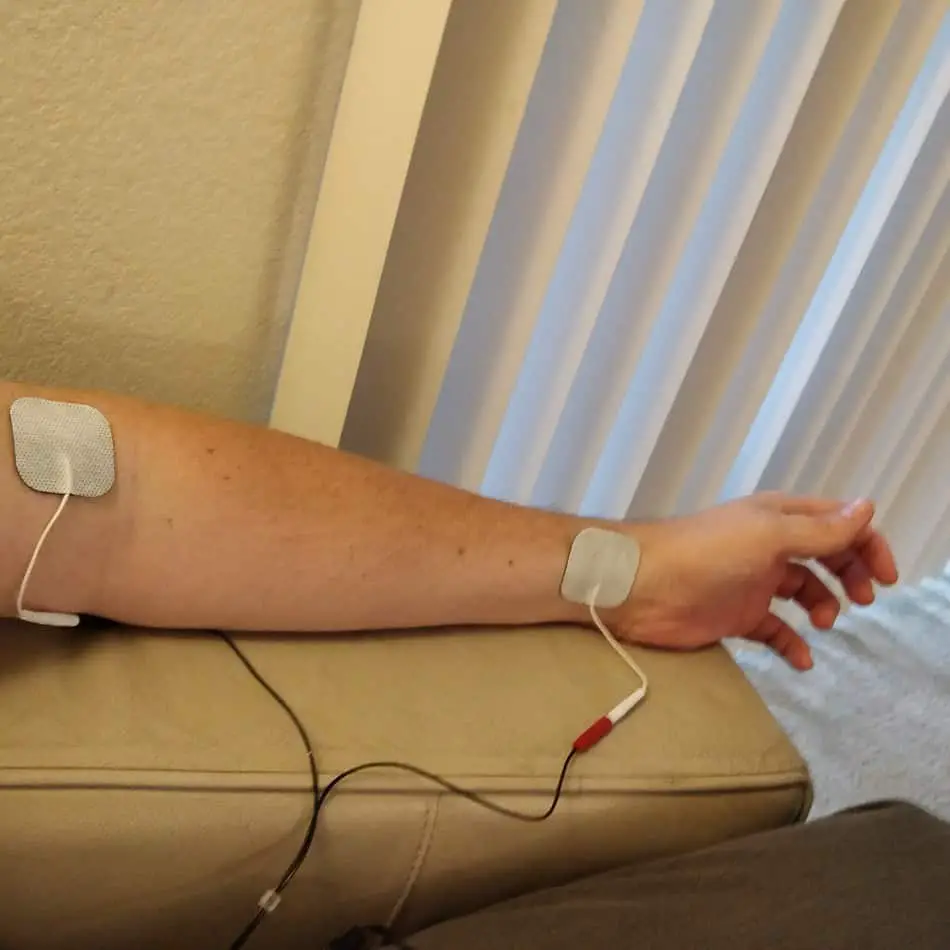
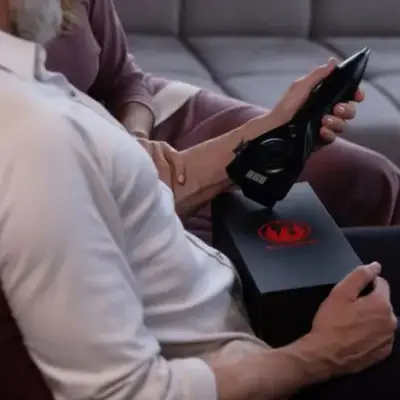

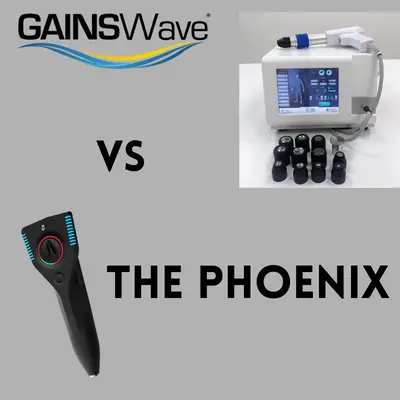
Leave a Reply
You must be logged in to post a comment.